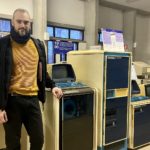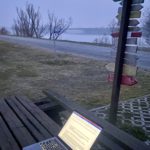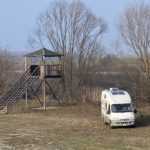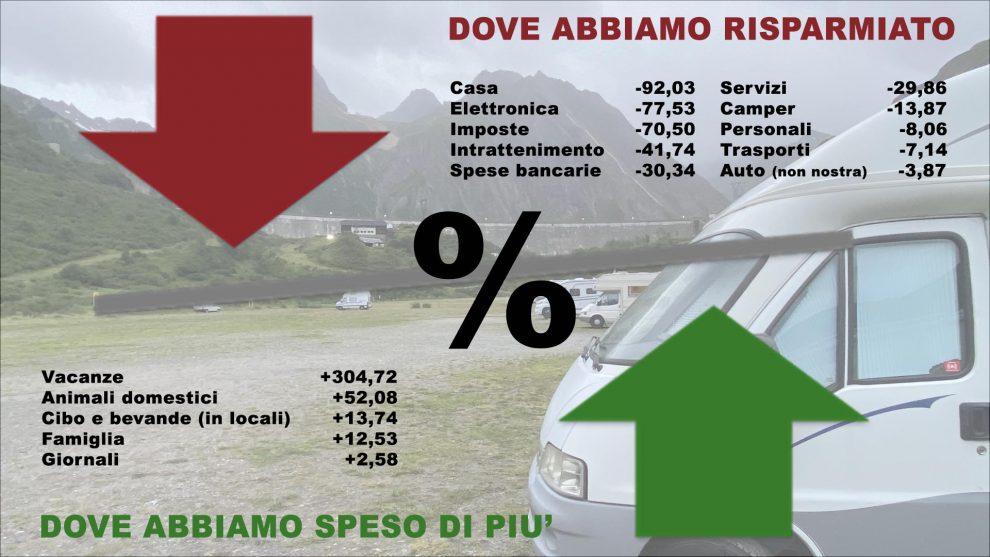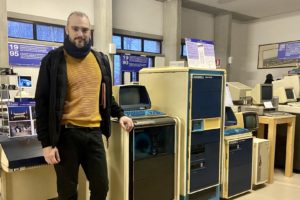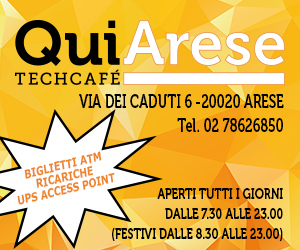August 30, 2020 – Some time ago we promised you a post that talks about how much it costs to live in a van. It is a very popular topic, especially requested by those who are considering whether or not to take this step. A single answer, however, does not exist. The variables are too many and depend on the personal lifestyle, the needs, the place where you mainly live, how long you travel, the vehicle you use, how many people are the crew and what age. And we could go on adding elements that can greatly vary the budget of fulltimers.
What you find in this post (make yourself comfortable: it is quite long) is only our very personal point of view, which does not want (and cannot) be exhaustive. If you are trying to understand how much your life in a van could cost you, we suggest you look for other experiences similar to ours (there are several fulltimers that periodically explain how much they spend on their lifestyle), but above all to weigh every single item in relation to your own way to be and to your own habits. After all, we have done so, developing a real budget sheet on which we have built many different hypotheses.
Precise and picky
However, setting a budget is not enough. It is also necessary to remember to write down the expenses from time to time (even the smallest ones: it is curious to find out how some items “swell” unexpectedly just because the individual amounts are small, but the opportunities for spending are numerous) and then compare them with your own estimates, adjusting the forecasts for the following months over time. We have the habit of doing it once every one or two months. We do it for our own peace of mind, so as not to overdo the expenses if we do not have adequate income in anticipation. For others it might be easier, perhaps because the revenue stream is more constant than ours, or because expenses can be easily covered without too many worries. The choice is yours: you can do it out of necessity or out of simple curiosity.
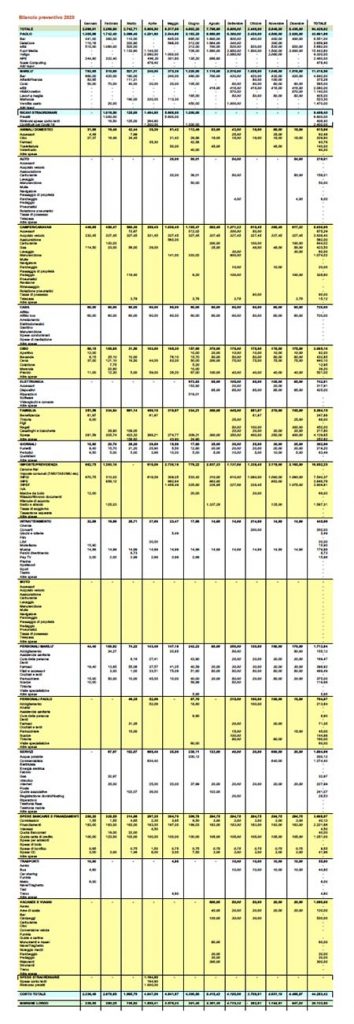
A note on the budget. We are quite picky. In the image on the side you can see a thumbnail of our Excel sheet that allows us to keep the accounts underneath. This is the tool we use every month or two to sum up and make comparisons with previous months, as well as to adjust forecasts. In everyday life, however, we use a practical app (available for iOs and Android): it’s called Home Budget with Sync and costs 5.49 for iPhones or 4.49 euros for Android smartphones. It can be used by several family members at the same time by automatically synchronizing the different devices and therefore each crew member can know entries, exits and the situation of accounts and cards (if you have secrets, it’s not for you!). At the end of the month just export the report in CSV format and import it into Excel to update your balance. There are obviously many other apps, but we are fine with this one.
Savings yes, but without exaggerating
But let’s get to the topic of the day, namely “how much do we spend living in a van”. Before seeing the numbers, we must make a final necessary premise: we made this choice not driven by economic problems, but by the desire to radically change our lifestyle. So you will not find the solution to the problem of living on €500-€700 a month, perhaps in two, as many would like to do by embracing the fulltimer philosophy. That is a feasible undertaking only with many sacrifices, even if it is repaid – if you can afford it – by visiting wonderful places. If you read our numbers carefully, you will easily understand where you can “squeeze” them to try to compress your budget as much as possible.
We both have good jobs (indeed, several jobs) that allow us to give ourselves something more. Nothing sensational, but if a couple of times a month we decide to go out for dinner we do it, we have subscriptions to music and pay-TV services and we also spend something for the holidays (strictly aboard our Falkor!). In short, we try – without overdoing it – to enjoy what little free time we have. To understand how we make a living, follow us to the end of this post. First we need to talk about numbers.
If I could have €1,500 a mont…
Now let’s not turn around. How much did we spend in our first fulltimer year, i.e. from June 2019 to May 2020? Just under €18,000, or about €1,500 per month. This figure includes everything, even every single coffee drunk, except: the expenses for taxes and social security (which for us were very variable and linked to the need to pay off arrears that despite our efforts had accumulated) and the expenses for financing (we have one for the purchase of Falkor and a personal one for which we still have to pay some installments). These figures do not fit with daily expenses, they vary a lot according to personal needs and each of you can easily add them to the others. If you’re lucky, maybe they are rumors you don’t even need to consider.
Did we save money by leaving the house we rented to live in the van? Yes, our annual expenses have decreased by 31% (we’ll see how later), but the economic spring should not be the only one in our opinion. It is true that we spend around €670 a month less than before (the house loan alone weighed €600), but it must be taken into account that the motorhome is not eternal. And in addition to the inevitable maintenance costs, it must be considered that sooner or later a change will have to be evaluated. How much this affects economically depends on the residual value of your vehicle, the cost of what you are going to buy and how long you plan to keep the same vehicle.
Home, sweet home, how much you cost me!
In any case, in our annual budget the main expenditure was obviously related to the house: loan, maintenance, electricity, gas, telephone and drinking water are all expenses that disappeared from one year to the next. In total, these items were worth just over €9,300 to us. We have recovered “only” €8,000 because we added expense items that were less relevant at home, such as fuel, gas for heating, accessories for the van that we would not have purchased, greater maintenance. And then some money, thanks to the greater availability, we spent to enjoy life a little more.
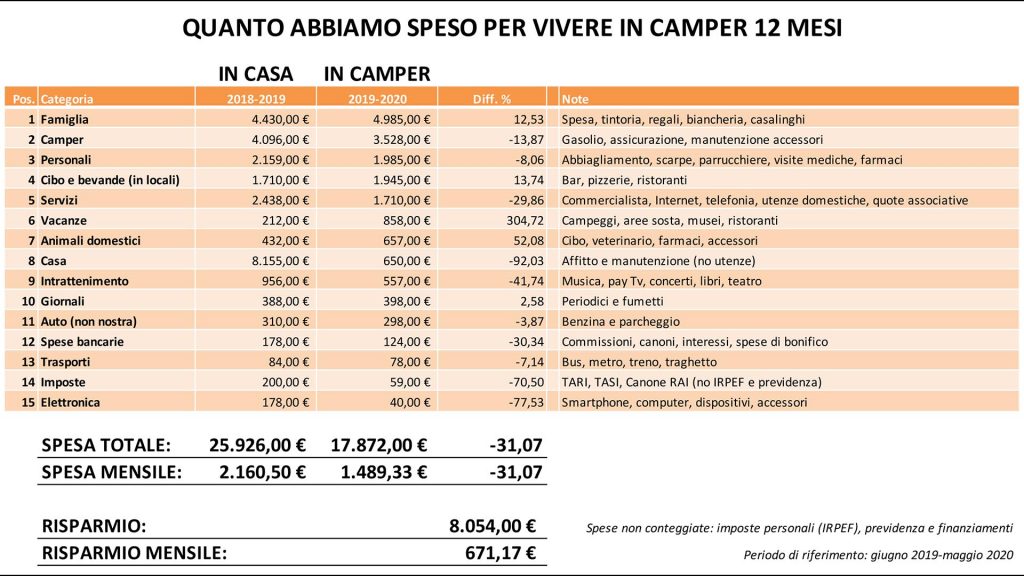
Chapter 1 – Family: €4,985 (+ 12.53%)
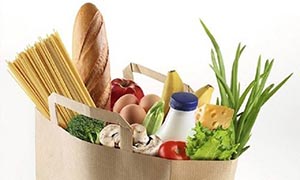
Today the most relevant item of our budget is the one we have named “family”. Here we put supermarket shopping (food, household cleaning and personal hygiene products), dry cleaners, gifts, linen, household items. In total, in these 12 months we have spent €4,985, with an increase of about 12% compared to when we lived at home. Spending at the supermarket has remained substantially unchanged year on year: just over €4,000 (about €430 per month), but expenses for gifts and “other expenses” have increased. So easily “cuttable”.
An indication to frame the value of €4,000: we live mainly in Northern Italy, in the province of Milan, and we regularly shop at Eurospin. Both of these elements have a weight: the cost of living near the Lombard capital can be significantly different than in other areas of Italy, and frequenting places like Esselunga (just to give an example) is certainly more expensive than the other supermarkets chain.
Chapter 2 – Van: €3.528 (-13,87%)
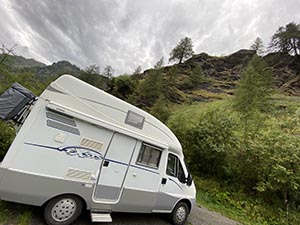
The second largest item in our budget is related to the motorhome. In comparison, we spent less in the 12 months under review than in the previous year, but only because some preparation and maintenance costs were addressed before making it our new home. An example for all: the distribution and its accessories. The result is that our spending has gone from about €4,100 to just over €3,500. Here there are very variable items, which can drastically change from one year to the next (maintenance, fuel, tolls, accessories) and other more predictable ones (insurance, ownership tax).
For the more curious: the insurance, taken out with Vittoria, weighs about €560 per year and includes roadside assistance, theft, fire, glass, vandalism and natural events. Our Falkor is insured for a value of €20,000. For diesel we spent about €820 (compared to €635 the previous year), covering about 8,000 kilometers: very few compared to our expectations, but explained by three months of pandemic “lockdown” and the link constituted by the workplace (which we will see later). On average, our Falkor travels about 11.5 km per liter. It is a 2005 Fiat Ducato with a 2.3-liter engine and 110 horsepower and the speed usually held on the motorway with “cruise control” is 110 km/h on the speedometer, corresponding to a real 100 km/h.
Last curious fact: in the item “van” we have entered the costs for gas, which is used for heating, cooking, boiler and 3-way refrigerator. Going to live on Falkor, our expense went from €48 per year (just under a couple of cylinders) to €412. This figure too must be seen in our context and in our time. Although we were in Northern Italy, the winter was quite warm. At the worst moment, a cylinder lasted us about a week, but this happened for a very short period of time. In total we consumed about 15 10-kilo gas cylinders, taking into account that in our country they are quite expensive: the place where we pay the least is €23, but more often they need €25 or €28 (always in selected places) and some time we even exceed €30.
Chapter 3 – Personal expenses: €1.985 (-8,06%)

The third step of the podium of our annual expenses is played at a very short distance by two items on which, with a little attention, there is ample room for improvement: personal expenses (clothing, shoes, personal care, hairdresser, drugs, visits specialist) and expenses for food purchased in local (bars, restaurants, pizzerias). These two items of expenditure are each worth just under €2,000, but while the first is better by 8%, the second is growing compared to the past (+14%), especially because we have allowed ourselves a few more flaws.
Among personal expenses, the part that is not controllable (or not very controllable) is that relating to medical visits and drugs, which is linked to the state of health. In this first year it weighed around €530, compared to €560 the year before. Everything else is much more manageable. Between clothing and shoes, we stopped at just over €300, down from 515 the year before, but there is not much stuff in the motorhome and the figure depends significantly on how many pairs of shoes you buy. The expense for hairdressers remained unchanged (€465). The item also includes expenses for yarns (wool, cotton, etc.) and related accessories: €455 which, however, are recovered by selling Marilù’s creative creations. You can obviously not put this expense in your budget!
Food and beverages: €1.945 (+13,74%)

Food and drinks bought on the locals cost us around €160 per month. It is a figure that can be greatly reduced, but about €25 per month refer to coffee or bottles of water and the rest is made up of a few takeaway pizzas and one or two dinner outings a month, where our target is usually stay within the €60 of expenditure (€30 per person). So some vices yes, but really without exaggerating.
Services: €1.710 (-29,86%)

The Services item is one of those which, together with the Home, recorded a significant reduction. We went from €2,438 to €1,710 euros. From here, electricity, gas (replaced by cylinders under the Van entry) and fixed telephony have disappeared. The Internet, which is our primary tool to be able to work on the move, has however seen its importance grow, reaching around €270 per year. After all, we use different SIMs from various operators to never run out of gigabytes or coverage and the composition varies continuously according to the offers.
Travel and vacations: €858 (+304,72%)

Travel and vacations has conquered an important place in the 2019-2020 budget, because the summer of last year we decided to invest something more in “pleasures of life”, spending 15 wonderful days between Friuli and Austria (you can read about it in this post). The result was a total cost of about €850, divided as follows: €282 for restaurants, €155 for campsites, €104 for rest areas, €120 for bars, €86 for monuments and museums, €48 for cable cars, €33 for tolls and €31 for parking. The year before we had traveled between the Piedmontese and French Alps, containing our spending at €212.
Pets: €657 (+52,08%) e Home: €650 (-92,03%)

The next entry concerns our little Yoda, the fantastic poodle who shares the burdens and honors of our fulltimers life and who has been keeping us company for over three years. We spent a total of €657 for him, including food, veterinary visits and ancillary costs (bowls, leashes and harnesses and so on). The previous year there were €432, but the expenses for vaccinations and check-ups have increased. More or less on the same level we find an item that in theory should have disappeared, the one relating to the “Home. We actually kept renting a garage, which currently costs us €60 a month, where we keep some furniture and personal things that we didn’t want to deprive ourselves of.
Entertainment: €557 (-41,74%) e Magazines: €398 (+2,58%)
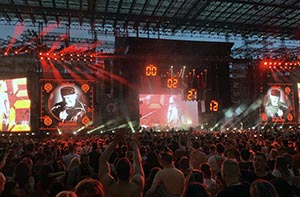
Two other items that can be easily “cut” are those related to entertainment and magazines. In our first year as a fulltimers we spent €557 and €398 respectively, while still reducing the cost compared to the past. Inside there are Spotify, one or two live concerts a year, subscription to Amazon Prime and Infinity, theaters, books and amusement parks. We have abandoned the cinema for some time, given the prices reached for a movie. For the magazines we are talking about some periodicals and some comics. For daily information we rely on newspaper sites, Sky and Rai TGs and the world of the network, where we always try to deepen the issues that interest us, especially with information from abroad, without stopping at the superficiality of social networks.
Car: €298 (-3,87%), Bank expenses: €124 (-30,34%) e Transports €78 (-7,14%)
The almost €300 per year for the item Car refer essentially to fuel and parking costs associated with the car of Paolo’s parents, which we often use to run errands in the area. Bank charges are the payment that we must pay in order to manage our money independently through home banking (down from €178 to €124 euros), while transport is essentially the cost of bus and metro tickets (from €84 to €78).
Local taxes: €59 (-70,50%) ed Consumer electronics €40 (-77,53%)
The latest items are those related to local taxes and the Rai license fee, of which the remnants of past life remain (€59) destined to disappear in the next budget. The Consumer electronics chapter deserves a mention, already low in our last year at home (€200) and low in our first year as a fulltimers (only €40). Our expenses were linked to small accessories, but it is clear that the purchase of a smartphone, a laptop, a drone or any other electronic object can cause this chapter to surge. For now we have not needed it, but sooner or later this chapter will also take on some relevance.
How do we support ourselves by living in a van
This is the overview of our costs. We hope it will be useful for you to set up some reflections. To close, let’s try to answer another very frequent question: but what do you do to keep yourself in the van? Here the situation must be divided in two: what we do now and what we want to do in the future. Today our main constraint is the management of a bar (if you want to visit us we are in Arese, in the province of Milan: QuiArese TechCafé, via Caduti 6, open every day from 7.30 to 23.00, from 8.30 on holidays). Here we have to physically work behind the counter a couple of days a week, and this limits us a lot in our movements. In perspective, we would like to abandon this job, keeping for ourselves only the administrative management of the premises, which we could also do remotely. In any case this is a source of income.
Il secondo lavoro importante che entrambi facciamo è quello dei giornalisti. Storicamente ci siamo occupati di tecnologia: Paolo prima per giornali venduti in edicola e poi per siti web, Marilù per quotidiani. Oggi Paolo, soprattutto grazie alla visibilità che grazie a Seimetri.it abbiamo conquistato, lavora anche nel settore dei giornali (di carta e online) che si occupano di turismo all’aria aperta. Le traduzioni tecniche, dall’inglese all’italiano nel settore della tecnologia e dell’informatica, costituiscono un altro importante pilastro per i nostri ricavi. Infine, Marilù ha messo a frutto la sua passione per l’uncinetto e si sta sempre più dedicando alla creazione di (bellissimi) prodotti che poi rivende. Tutte queste attività messe assieme ci garantiscono ricavi coerenti con le spese che sosteniamo. E a parte il lavoro dietro il bancone del bar, tutti possono essere portati avanti lavorando da remoto. La nostra speranza è quindi quello di levare presto l’àncora e salpare verso nuovi lidi.
The second important job we both do is that of journalists. Historically we have dealt with technology: Paolo first for magazines sold at newsstands and then for websites, Marilù for newspapers. Today Paolo, above all thanks to the visibility that we have gained thanks to Seimetri.it, also works in the sector of magazines (paper and online) that deal with outdoor tourism. Technical translations, from English to Italian in the technology and information technology sector, are another important pillar for our revenues. Finally, Marilù has put her passion for crochet to good use and is increasingly dedicating herself to creating (beautiful) products which she then resells. All these activities put together guarantee us revenues that are consistent with the expenses we incur. And aside from the work behind the bar, everyone can be done by working remotely. Our hope is therefore to raise anchor soon and set sail for new shores.
©2021 seimetri.it – If you want to leave a comment on this article, you can do it on our Facebook page




